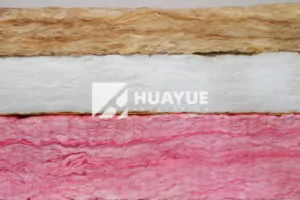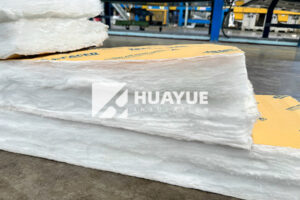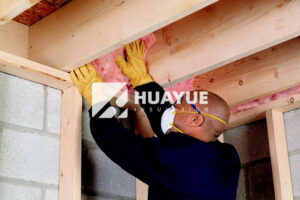How Does Fibreglass Insulation Work?
Struggling to understand how that fluffy pink stuff actually keeps your house warm? You know it’s important for energy bills, but the science behind it can seem like a mystery.
Fibreglass insulation works by trapping millions of tiny air pockets between its fine glass fibres. This trapped air is an extremely poor conductor of heat, which significantly slows the transfer of heat from warmer areas to cooler areas, keeping your home comfortable year-round.
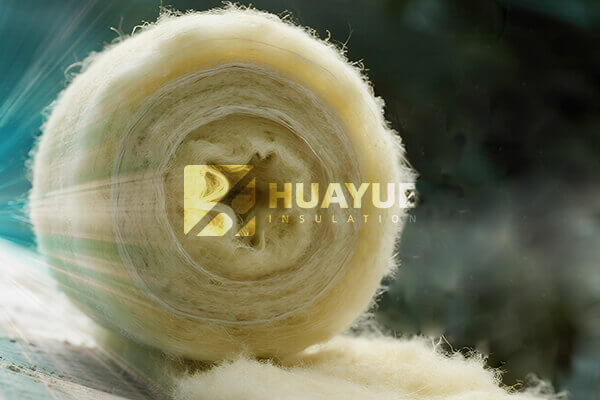
Understanding the "how" behind your building materials is key to making smart choices. As a company that has been manufacturing and exporting thermal insulation materials like glass wool since 1998, we’ve built our reputation on this science. It’s not magic, but a clever use of material properties. Let’s break down exactly how fibreglass works to provide thermal comfort and why it remains a top choice for projects around the globe.
What Is Fibreglass Insulation?
Ever wonder what that common, cotton-like insulation is actually made of? It’s one of the most widespread materials in construction, yet many people don’t know its composition.
Fibreglass insulation is a thermal and acoustic insulation material made from extremely fine fibres of glass. These fibres are bound together with a resin, creating a wool-like texture that can be formed into batts, rolls, or left loose for blow-in applications.
A close-up shot of a roll of pink fibreglass insulation, showing its texture
Deeper Dive into Composition
The name "fibreglass" or "glass wool," as we often call it in the industry, is quite literal. The primary raw ingredient is silica sand, the same sand you’d find on a beach, along with a significant amount of recycled glass. This makes it a surprisingly sustainable choice. The process involves melting these raw materials in a furnace at incredibly high temperatures, around 2500°F (1370°C). This molten glass is then spun at high speeds through a device with thousands of tiny holes, flinging out fine filaments of glass. A binder is then sprayed onto these fibres to hold them together in a cohesive mat. This mat is then cured in an oven, which gives it strength and its final form. The final product is a mass of intertwined glass fibres that are excellent at trapping air, which is the key to its insulating power. It’s a product born from simple, natural materials transformed by modern manufacturing.
How Does Fibreglass Insulation Work?
You know it stops heat, but what’s the actual mechanism at play? It seems too simple that a blanket of glass fibres could make such a big difference in your home’s temperature.
Fibreglass insulation primarily works by resisting heat transfer through conduction and convection. The vast number of tiny air pockets trapped within the fibres disrupts the natural movement of heat, effectively keeping warmth inside during winter and outside during summer.
Deeper Dive into Heat Transfer
To appreciate how fibreglass works, you need to understand how heat moves. Heat naturally flows from a warmer space to a cooler one through three methods:
- Conduction: Heat travelling through a solid material. The glass fibres themselves are poor conductors, and they have very little contact with each other, creating a difficult path for heat to follow.
- Convection: Heat travelling through the movement of air. This is where fibreglass truly excels. It creates millions of tiny air pockets, and this trapped, stagnant air cannot circulate. By stopping this air movement, it effectively stops convective heat transfer, which is a major source of heat loss in a home.
- Radiation: Heat travelling in the form of infrared waves. Standard fibreglass does little to stop radiant heat. However, some fibreglass products come with a foil facing (a radiant barrier), which reflects heat away from it, adding another layer of insulating performance.
The effectiveness of insulation is measured by its R-value. The ‘R’ stands for resistance to heat flow. The higher the R-value, the better the material insulates. The R-value of fibreglass is determined by its thickness and density—more fibres and more trapped air mean a higher R-value.
Is Fibreglass Good for Insulation?
With so many modern alternatives available, is fibreglass still a good choice? It’s a fair question when you’re investing in your property’s long-term comfort and efficiency.
Yes, fibreglass is an excellent insulation material. It offers a superb balance of thermal performance (R-value), cost-effectiveness, and safety. Its inherent non-combustible nature, sound-dampening qualities, and resistance to mould make it a reliable and effective choice for most applications.
Deeper Dive into Its Effectiveness
Fibreglass insulation has remained a go-to material for builders and homeowners for decades for several compelling reasons. Its primary job is to insulate, and it does that very well, offering R-values typically ranging from R-11 to R-38 depending on the thickness, which meets or exceeds building code requirements in most areas. But its value goes beyond just thermal resistance. It’s also a great acoustic insulator, dampening sound transfer between rooms and from the outside.
From a safety standpoint, the glass fibres will not burn, giving it a Class A fire rating. This provides peace of mind that your insulation won’t act as fuel in a fire. Furthermore, since it’s made of glass, it’s inorganic and won’t support mould growth, nor will it rot or decay over time. When you combine this proven, multi-faceted performance with its relatively low cost compared to other options like spray foam, you get a material that delivers exceptional value. It’s a practical, efficient, and dependable solution for insulating a home.
How Long Does Fibreglass Insulation Last for?
Are you worried you’ll have to replace your insulation in a few years? It’s a significant project, and you want to ensure it’s a one-time investment for the foreseeable future.
If installed correctly and left undisturbed, fibreglass insulation can last for 80 to 100 years, effectively the lifetime of the house. Its performance does not degrade over time, but it can be compromised by physical damage, compression, or excessive moisture.
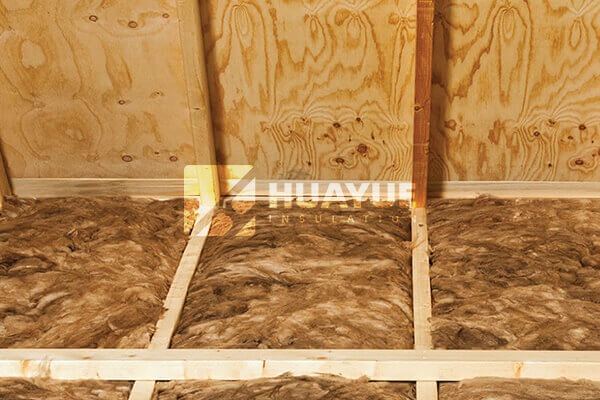
Deeper Dive into Longevity
The material itself—the glass fibres—is incredibly durable. It’s an inorganic material, meaning it doesn’t decompose like organic materials would. This is why its expected lifespan is so long. However, several factors can reduce its effectiveness and lifespan. The biggest enemies of fibreglass insulation are water and compression. If the insulation gets wet from a roof or plumbing leak, it must be removed and replaced. The water weighs it down, compressing it and eliminating the air pockets that give it its insulating power. This also invites mould to grow on surrounding organic materials like wood studs and drywall.
Similarly, if the insulation is compressed—for example, by storing heavy boxes on top of it in the attic—its R-value is drastically reduced. The key to its performance is its loft, or fluffiness. When you squeeze out the air, you create a much easier path for heat to travel. Therefore, the "100-year" lifespan assumes the insulation is installed in a dry, protected cavity where it can maintain its original thickness and form. For most homes, this is entirely achievable, making fibreglass a truly long-term investment.
Which Is Better Insulation: Foam or Fibreglass Batts?
Stuck choosing between traditional fibreglass batts and modern spray foam? This is one of the most common dilemmas my clients face when planning a project.
The "better" insulation depends on the specific application and budget. Spray foam offers a higher R-value per inch and creates an air seal, but at a significantly higher cost. Fibreglass provides excellent performance for a much lower price and is easier for DIY installation.
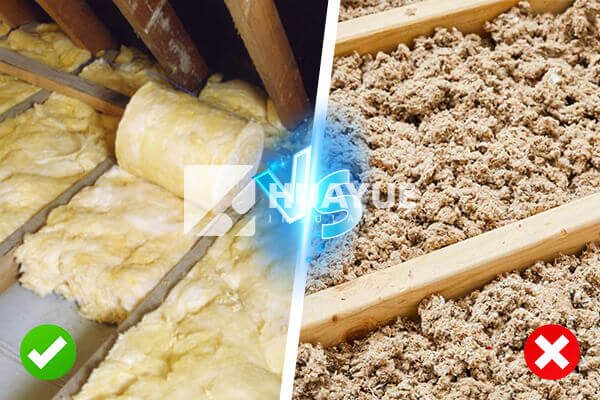
Deeper Dive into the Comparison
As a manufacturer that offers various insulation types, we help engineers like Hans in Germany make these critical decisions for large-scale projects. The choice between foam and fibreglass comes down to balancing performance needs with budget constraints.
| Feature | Fibreglass Batts | Spray Foam Insulation (Closed-Cell) |
|---|---|---|
| R-Value per Inch | ~R-3.0 to R-4.0 | ~R-6.0 to R-7.0 |
| Cost | $ (Affordable) | $$$ (Expensive) |
| Air Sealing | Does not create an air seal. Requires separate air sealing. | Expands to create a tight air and vapour barrier. |
| Installation | Can be a DIY project. Relatively simple professional installation. | Requires professional installation with specialized equipment. |
| Moisture | Can absorb water; foil-faced versions act as a vapour retarder. | Blocks moisture and can add structural rigidity. |
| Application | Ideal for standard stud cavities, attics, and crawl spaces. | Excellent for irregular spaces, rim joists, and where the highest R-value in a thin profile is needed. |
For most standard new construction or retrofits, fibreglass offers more than enough insulating power to create a comfortable, energy-efficient home at a fraction of the cost. Spray foam is a premium product that excels in specific situations, such as sealing hard-to-reach areas or when wall depth is limited. The best choice is often a hybrid approach, using fibreglass for the bulk of the project and spray foam for targeted air-sealing areas.
Why Is Glasswool Insulation Still So Popular?
In a world of constant innovation, why does this seemingly old-school material remain a bestseller? It seems like newer technologies should have replaced it by now.
Glass wool insulation remains popular because it offers an unbeatable combination of proven performance, affordability, and accessibility. It’s a known quantity for builders, easy to install, meets fire and safety codes, and provides excellent thermal and acoustic insulation for its cost.
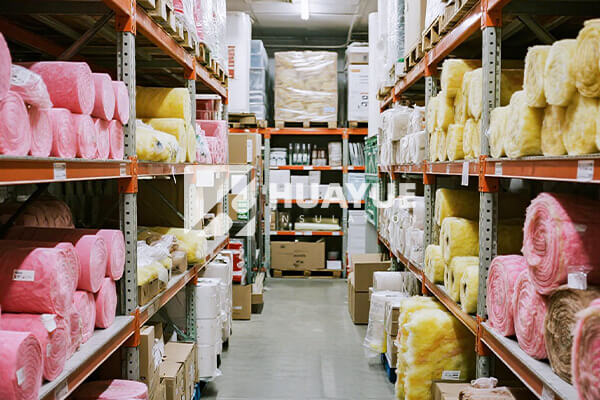
Deeper Dive into Market Leadership
The enduring popularity of fibreglass isn’t an accident; it’s a testament to its fundamental value. Since we started HUAYUE in 1998, we’ve seen trends come and go, but demand for glass wool has been a constant. The construction industry relies on predictability and reliability. Builders know exactly how to install fibreglass, what its performance will be, and how to budget for it. There are no surprises. This reliability is a huge selling point.
Furthermore, its cost-effectiveness is unmatched. For property developers and homeowners alike, it allows them to meet energy efficiency standards without the premium price tag of alternatives. This accessibility makes it a democratic choice for all types of projects. Add in its non-combustibility, sound-dampening qualities, and resistance to pests and rot, and you have a product that ticks all the essential boxes. While newer technologies have found their niche, fibreglass remains the versatile workhorse of the insulation world because it provides a complete, reliable, and affordable solution to a fundamental building need.
Where Can You Bulk Buy Glasswool Insulation?
Are you a builder, contractor, or managing a large project and need a reliable source for wholesale insulation? Finding a partner who can deliver quality, quantity, and customized solutions is critical.
For wholesale and custom orders, partnering directly with an experienced manufacturer is the best approach. A company like HUAYUE can provide high-quality glass wool insulation, customized to your project’s specifications, and shipped globally.
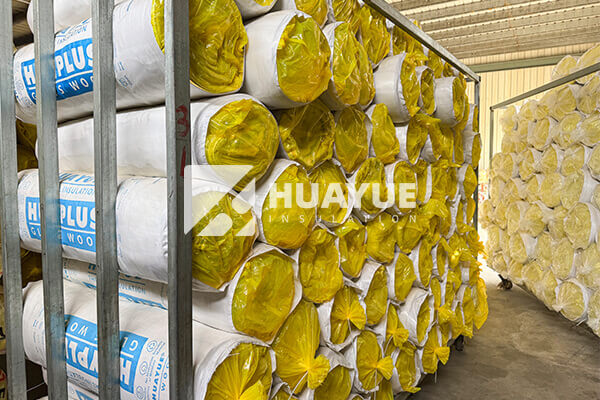
Your One-Stop Insulation Solution
As a premier developer and manufacturer of thermal insulation since 1998, we at HUAYUE Group are perfectly positioned to handle your bulk glass wool needs. Our heritage is built on over 30 years of industry leadership in energy-saving materials. We don’t just sell insulation; we manufacture it. This gives us complete control over quality and allows us to offer customized solutions for your specific project requirements.
We operate 15 glass wool production lines, alongside lines for rock wool, rubber foam, and foam glass, making us a true one-stop provider. With a network of 8 branch offices and a strategic location in the Beijing-Tianjin-Hebei economic circle, we have excellent logistics for exporting to our partners in over 100 countries. Whether you need standard batts or a custom solution, we offer world-class, certified quality (ISO, CE, SGS) at a competitive price. For a reliable, wholesale supply of glass wool insulation, partnering with a source like HUAYUE is your most direct and efficient option.
Conclusion
In short, fibreglass insulation works by masterfully trapping air to slow heat transfer. Its lasting popularity is a testament to its effective, reliable, and affordable performance in creating comfortable, energy-efficient buildings.
With our deep-rooted experience since 1998, HUAYUE Group is proud to manufacture and supply top-tier glass wool and other insulation materials. We’re ready to create a customized, one-stop solution for your project, anywhere in the world.
You may also be interested in:
Ready to Get Started?
Get in touch with our experts for personalized solutions tailored to your needs.
Get Free QuoteLatest Articles
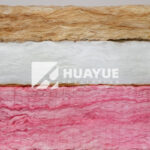
Eco Batt Insulation: What You Need to Know?
Dec 12, 2025
Let's Work Together
Ready to take your business to the next level? Get in touch with our team of experts and let's discuss how we can help you achieve your goals.
Get Free Solutions
